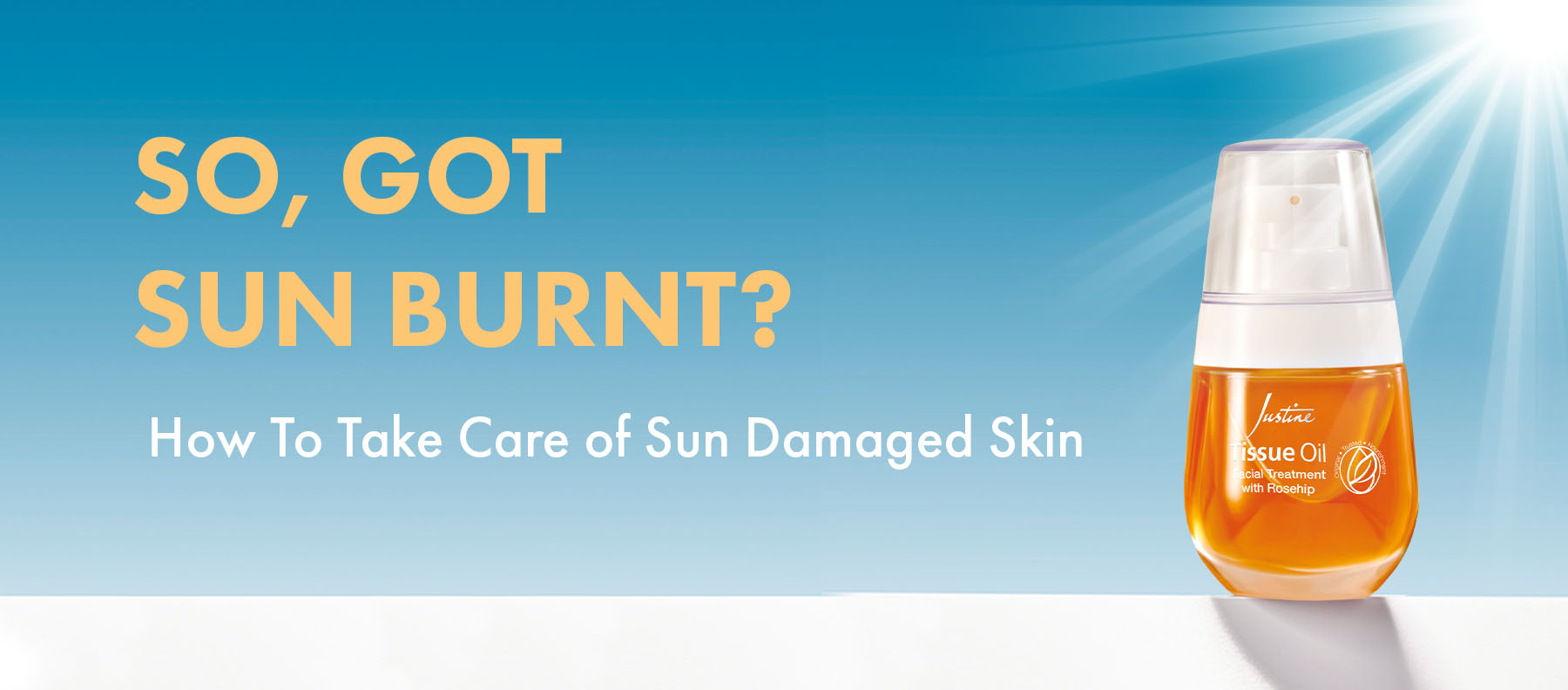Published: 2021/01/06
So, you got Burnt?
Knowing what sunburn is, how it happens and the remedies that work can help minimise short and long-term side effects. Here is your Sunburn 101 guide:

We all know the drill: apply sunscreen every 2 hours, even when it’s cloudy; wear a hat and protective clothing; keep hydrated at all times. But what happens in those moments where you forget to apply or reapply while you’re out in the sun?
Try as we might, many of us have experienced sunburn at least once in our life. And sunburn...well, it burns. Knowing what sunburn is, how it happens and the remedies that work can help minimise short and long-term side effects. Here is your Sunburn 101 guide:
WHY YOU FRY
Sunburn happens when the sun’s ultraviolet radiation damages the DNA inside skin cells. As a result, those cells die in a process known as apoptosis. This excessive damage and death prompts the immune system to release a flood of inflammatory proteins and blood to the area. In the process, the outer skin becomes hot, irritated, and red.
MORE THAN JUST A BURN
Intense, repeated UV light exposure that results in sunburn increases the risk of other skin damage, such as dark spots, rough spots, and dry or wrinkled skin. It also raises the risk of skin cancers such as melanoma. You can prevent sunburn and related conditions by protecting your skin.
KNOW THY SKIN
So, how do you know that you’ve had too much fun in the sun? The first and most obvious sign of sunburn is that your skin changes colour, in a range that can go from slightly pink to deep red, and can become warm to the touch. Other symptoms include: skin that feels warm or hot to the touch, pain and tenderness, swelling, small fluid-filled blisters, which may break, headache, fever, nausea and fatigue, and eyes that feel painful or gritty.
Darker-skinned people may not notice any redness. Still, they’ll have all the other symptoms, such as heat, sensitivity and itchiness. After a few days, any skin tone may also experience peeling.
IMPORTANT: If you’re experiencing a severe burn, blisters, raw skin, or open wounds, get off the internet and get yourself to a doctor. Seriously. You absolutely cannot treat a severe sunburn at home without risking infection or scarring, and it's also possible you're dealing with sun poisoning (a severe case of sunburn that occurs after you've been exposed to ultraviolet (UV) rays from the sun for an extended period of time) too.
WHAT NOW?
So, you've burnt your skin into a delightful shade of red, it's unbearably warm to the touch and feels tighter than your grandfather’s home-made biltong. What’s the next step? When the red sets in, you’re going to need sunburn remedies from the experts: Here’s what dermatologists recommend.
KEEP YOUR COOL
Just like a burn from a hot beverage or plate, one from the sun’s rays traps warmth in the skin. So the first big step to treating sunburn is to release that heat. Wrap some ice in a flannel and apply to affected areas to subside the burning feeling. Follow with a cool shower or bath and stay far away from hot, or even warm water.
HAPPY HYDRATION
Once the skin has cooled a bit, moisturise the area—obsessively. There’s good data to suggest that supple skin recovers faster from trauma. Ceramides, like those found in Justine Tissue Oil, are a smart way to fight dehydration caused by sunburn while reinforcing the skin’s barrier function. Hydrated skin is also less likely to peel away and cause scarring.
VITAMIN HEALING
One ingredient in particular has been found to help heal sunburns dramatically - Vitamin E. Proven to reduce the number of sunburnt cells and limit the potential damage associated with UVB radiation from sunlight, moisturising skin care with Vitamin E also helps with signs of ageing due to the sun. Be careful what ingredients are used to deliver that surge of Vitamin E, however. Look for plant derived oils, like coconut, avocado or almond oil. Avoid mineral oil bases, as the petroleum can actually prevent absorption of vitamins.
THE REAL SKIN DOCTOR
Justine’s Tissue Oil formula contains a trusted, superb blend of naturally derived oils, vitamins and essential fatty acids that help to improve the overall appearance of scars, stretch marks and sun damage in just 2 weeks*. It also helps skin look and feel younger and more radiant in as little as 1 week*. Justine Tissue Oil also keeps skin moisturised for up to 24 hours after a single application*.
Another important skin protector in your repertoire is Justine Tissue Oil Facial Treatment with Rosehip. Rosehip oil is rich in essential fatty acids and antioxidants, which are integral for tissue and cell regeneration in the skin. This means you can reduce the look of redness from sunburns, scars and spots in just 8 hours*.
*Based on a consumer study